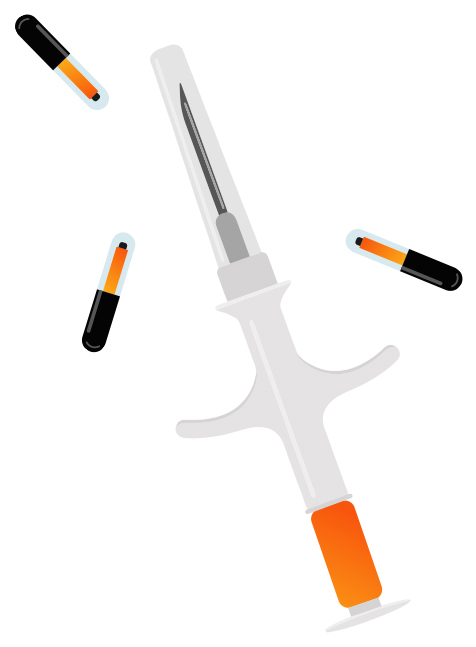QU’EST-CE QU’UNE MICRO-PUCE?
COMMENT ÇA FONCTIONNE?
Une micro-puce peut faire toute la différence entre un animal perdu et un animal retrouvé. Bien que les colliers et les étiquettes aient leur importance, ceux-ci peuvent se détacher ou glisser.
Une micro-puce est une puce électronique insérée dans un petit cylindre de verre (faisant à peu près la taille d’un grain de riz) que l’on injecte sous la peau de votre animal et qui sert de moyen d’identification.
Chaque micro-puce est connectée à un registre en ligne contenant les informations de contact du propriétaire. Au cas où votre animal serait perdu et serait amené dans un refuge ou une clinique vétérinaire, sa micro-puce sera scannée. Si les informations de contact du fichier sont à jour, vous serez rapidement avertis et retrouverez votre animal au plus vite.
COMMENT LA MICRO-PUCE EST-ELLE IMPLANTÉ?
MON ANIMAL VA T’IL AVOIR MAL?
L’implantation d’une micro-puce est rapide, facile et sans douleur. L’injection est effectuée à l’aide d’une aiguille hypodermique, d’une taille légèrement plus grande que celle des aiguilles utilisées pour les vaccins. Cela ne nécessite aucune anesthésie.
QUELLES INFORMATIONS SONT ACCESSIBLES?
Y A-T-IL UNE INQUIÉTUDE AU SUJET DE MA VIE PRIVÉE?
Les seules informations qui seront accessibles à partir de la micro-puce de votre animal sont les informations de contact que vous aurez fournies pour le registre du fabricant des micro-puces. Ces informations seront uniquement utilisées pour vous contacter au cas où votre animal aurait été retrouvé après que sa micro-puce ait été scannée.
MON ANIMAL PORTE DÉJA UN COLLIER IDENTIFIÉ.
AI-JE VRAIMENT BESOIN D’UNE MICRO-PUCE?
Les colliers et les étiquettes peuvent se perdre ou s’abimer, ce qui peut poser problème aux services de contrôle des animaux ou au personnel d’un refuge pour identifier le propriétaire d’un animal. L’utilisation combinée d’étiquettes et d’une micro-puce – en veillant à ce qu’elles soient régulièrement mis à jour – est le meilleur moyen de vous assurer que votre animal rentrera en toute sécurité.
MON CHAT NE SORT JAMAIS DEHORS.
DOIS-JE LE FAIRE MICRO-PUCÉ?
Les chats sont des spécialistes de l’évasion. Même si c’est une bonne chose que vous gardiez votre chat en sécurité à l’intérieur, il est toujours possible qu’il puisse s’échapper par une porte laissée entrouverte par un invité ou un réparateur, ou encore par une fenêtre avec une moustiquaire mal fixée. Étant donné qu’il existe toujours une possibilité de sortie pour votre chat, le plus sûr est de l’équiper d’une micro-puce.
MON CHAT NE SORT JAMAIS DEHORS.
DOIS-JE LE FAIRE MICRO-PUCÉ?
Les micro-puces ne s’usent pas, car elles ne contiennent pas de batteries ou de pièces mobiles. La puce est activée par les ondes radio émises par le scanner lorsqu’on le passe au-dessus de la zone d’implantation.


QUI VEUT DEVENIR BÉNÉVOLE ?
Devenir bénévole à SPCA Ouest, c’est apporter votre soutien à un refuge où l’on ne tue pas les animaux qui sauve plus de 2000 animaux chaque année. Si vous souhaitez soutenir notre cause en devenant bénévole, veuillez remplir le formulaire ci-dessous et nous vous recontacterons dès que possible !
je m'implique


